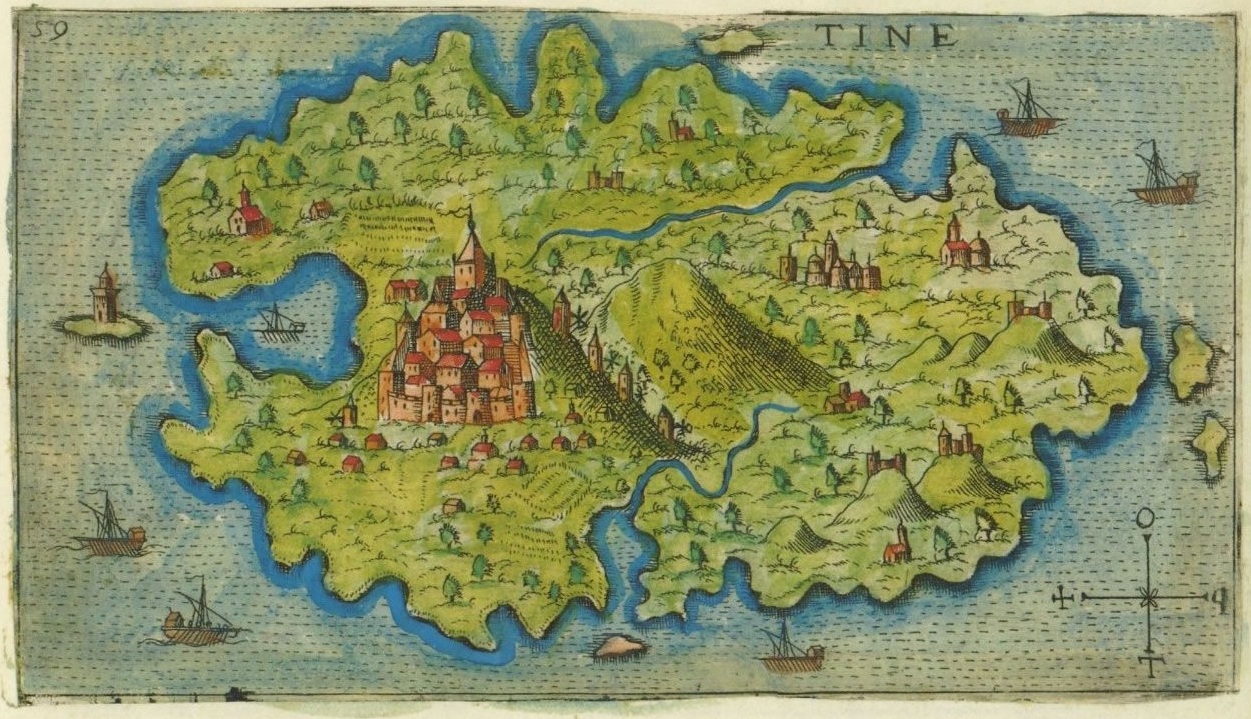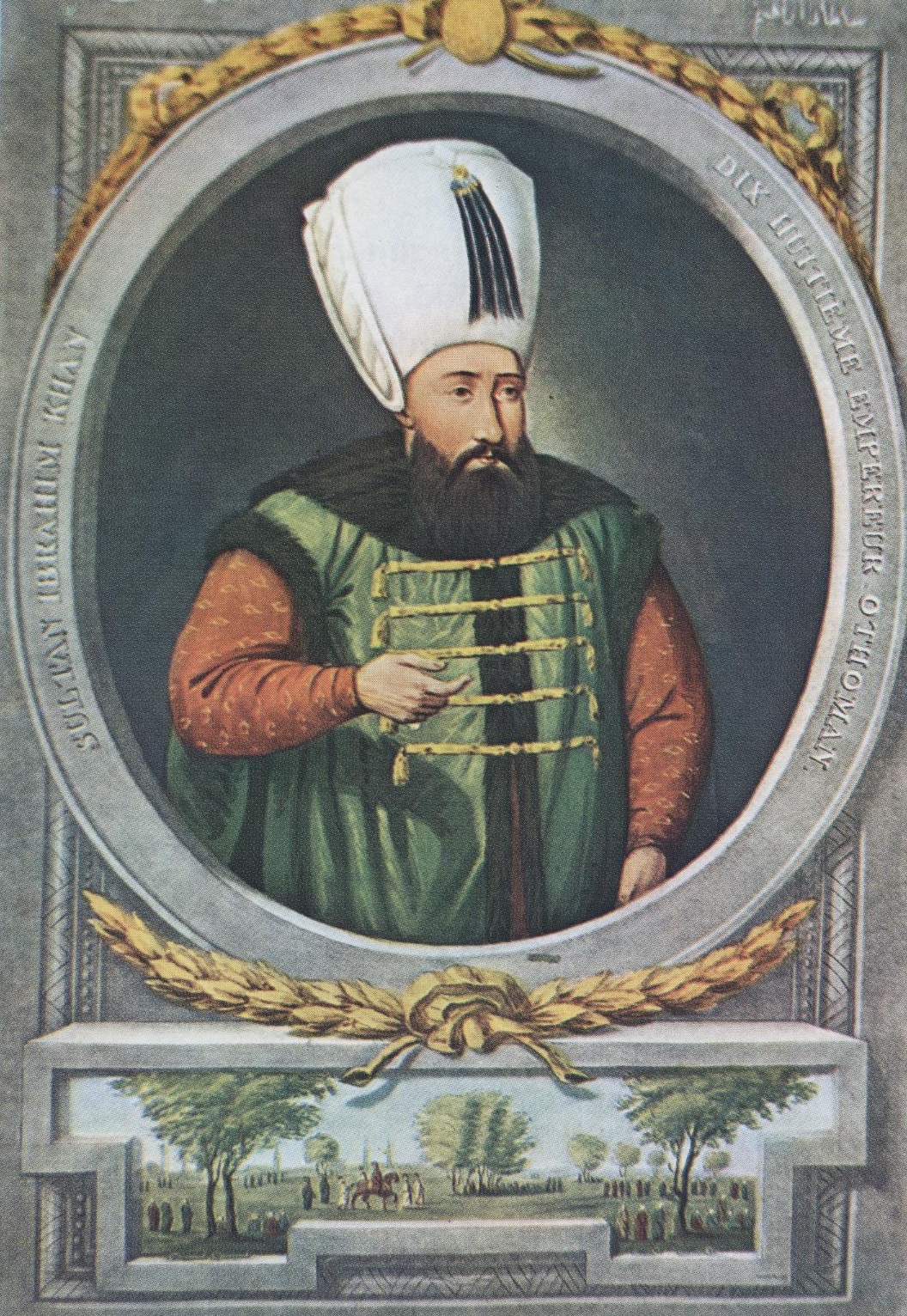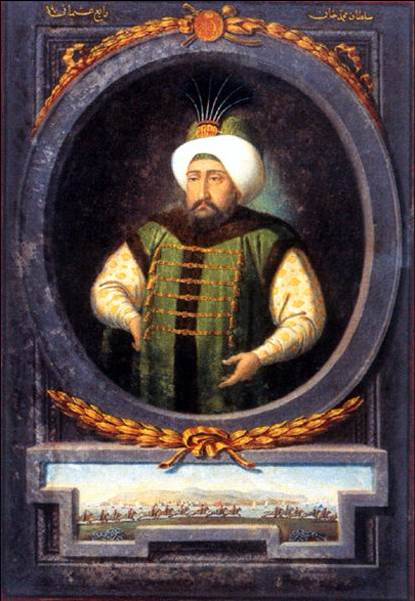|
ĂśmmĂĽgĂĽlsĂĽm Sultan (daughter Of Ahmed III)
Ümmügülsüm Sultan (; 11 February 1708 – 28 November 1732) was an Ottoman princess, daughter of Sultan Ahmed III. Early life Ümmügülsüm Sultan was born on 11 February 1708 in the Topkapı Palace. She had a twin sister Zeynep Sultan, who died on 5 November 1708. In 1710 at the age of about two, she was engaged to the elderly Abdurrahman Pasha, a vizier. It was an expensive affair for the pasha. He sent to Topkapı a great number of valuable engagement presents. The engagement cost Abdurrahman more than 10,000 gold coins. However, he died in 1715 before the marriage could take place. Marriage In 1724, her father arranged her marriage to Genç Ali Pasha, nephew of Grand Nevşehirli Damat Ibrahim Pasha. The first of the processions on 21 February 1724, on the occasion of the transfer of the betrothal gifts of Ali Bey from the grand vezir's palace to the Topkapı Palace, was led by the Grand Admiral Kaymak Mustafa Pasha. The grand admiral was the best man of Ali Pasha. The ... [...More Info...] [...Related Items...] OR: [Wikipedia] [Google] [Baidu] |
Ottoman Dynasty
The Ottoman dynasty () consisted of the members of the imperial House of Osman (), also known as the Ottomans (). According to Ottoman tradition, the family originated from the Kayı tribe branch of the Oghuz Turks, under the leadership of Osman I in northwestern Anatolia in the district of Bilecik, Söğüt. The Ottoman dynasty, named after Osman I, ruled the Ottoman Empire from 1299 to 1922. During much of the Empire's history, the sultan was the absolute regent, head of state, and head of government, though much of the power often shifted to other officials such as the Grand Vizier of the Ottoman Empire, Grand Vizier. During the First Constitutional Era, First (1876–78) and Second Constitutional Eras (1908–20) of the late Empire, a shift to a constitutional monarchy was enacted, with the Grand Vizier taking on a prime ministerial role as head of government and heading an elected General Assembly of the Ottoman Empire, General Assembly. The imperial family was deposed ... [...More Info...] [...Related Items...] OR: [Wikipedia] [Google] [Baidu] |
Patrona Halil
Patrona Halil (; ; 1690 in Argos Orestiko, Hrupishta – November 25, 1730 in Istanbul) was the instigator of a mob uprising in 1730 which replaced Ottoman Dynasty, Sultan Ahmed III with Mahmud I and ended the Tulip Period.Altınay, Ahmet Refik (Hrz. Haydar Ali Dirioz), (1973) ''Lale Devri'' Halil was born to an Albanian people, Albanian family in Argos Orestiko, Hrupishta, a village in the then Bitola, Bitola vilayet. He became a Janissary and after joining a Janissary rebellion in Niš and leading one in 1720 in Vidin, he moved to He was known to have engaged in petty trade and crafts like working as a Turkish bath, hammam attendant. Halil was also a former sailor. He spent much of his time at meyhanes of Galata. Halil was known as Horpeşteli Arnavut Halil after his place of birth and ethnicity but his Albanian compatriots called him ''Patrona'' (Vice Admiral). His followers were 12,000 janissaries, mostly Albanians. For weeks after the revolt, the empire was in the hands ... [...More Info...] [...Related Items...] OR: [Wikipedia] [Google] [Baidu] |
1732 Deaths
Events January–March * January 21 – Russia and Persia sign the Treaty of Riascha at Resht. Based on the terms of the agreement, Russia will no longer establish claims over Persian territories. * February 9 – The Swedish East India Company begins its profitable first expedition to China, departing Gothenburg on the ship '' Friedericus Rex Sueciae'' under the command of Colin Campbell. * February 14 – Henry Fielding's comedy '' The Modern Husband'' premieres at the Royal Theatre on Drury Lane in London. * February 25 – John Stackhouse is appointed by the British East India Company as the new President of the Bengal Presidency and serves for seven years. * February 27 – Herat Campaign: General Nader Shah of Persia (now Iran) suppresses the rebellion by Zulfiqar Khan in the city of Herat in what is now Afghanistan. * March 19 – Chamaraja Wodeyar VII becomes the new Maharaja of the Kingdom of Mysore in Southern India, now th ... [...More Info...] [...Related Items...] OR: [Wikipedia] [Google] [Baidu] |
1708 Births
In the Swedish calendar it was a leap year starting on Wednesday, one day ahead of the Julian and ten days behind the Gregorian calendar. Events January–June * January 1 – Charles XII of Sweden invades Russia, by crossing the frozen Vistula River with 40,000 men. * January 7 – Bashkir rebels besiege Yelabuga. * January 12 – Shahu I becomes the fifth Chhatrapati of the Maratha Empire in the Indian subcontinent. * February 26 – HMS ''Falmouth'', a 50-gun fourth-rate ship of the line built at Woolwich Dockyard for the British Royal Navy, is launched. * March 11 – Anne, Queen of Great Britain, withholds Royal Assent from the Scottish Militia Bill, the last time a British monarch vetoes legislation. * March 23 – James Francis Edward Stuart, Jacobite pretender to the throne of Great Britain, unsuccessfully tries to land from a French fleet in the Firth of Forth in Scotland. * April 8 – Easter Sunday: The first performance of Georg ... [...More Info...] [...Related Items...] OR: [Wikipedia] [Google] [Baidu] |
Kösem Sultan
Kösem Sultan (; 1589 – 2 September 1651), also known as Mahpeyker Sultan (;), was the Haseki sultan, Haseki Sultan as the chief consort and legal wife of the List of sultans of the Ottoman Empire, Ottoman Sultan Ahmed I, Valide sultan, Valide Sultan as a mother of sultans Murad IV and Ibrahim of the Ottoman Empire, Ibrahim and Büyük Valide Sultan as a grandmother of Sultan Mehmed IV as well as the official Regent of the Ottoman Empire reigning from 1623 to 1632 during the minority of her son Murad IV and her grandson Mehmed IV between 1648 and 1651. She became one of the most powerful and influential women in History of the Ottoman Empire, Ottoman history as well as a central figure during the period known as the Sultanate of Women. Kösem's stature and influence were facilitated by her astute grasp of Ottoman politics and the large number of children she bore. One of her sons and grandson required her regency early in their reigns, and her daughters’ marriages to promi ... [...More Info...] [...Related Items...] OR: [Wikipedia] [Google] [Baidu] |
Ahmed I
Ahmed I ( '; ; 18 April 1590 – 22 November 1617) was the sultan of the Ottoman Empire from 1603 to 1617. Ahmed's reign is noteworthy for marking the first breach in the Ottoman tradition of royal fratricide; henceforth, Ottoman rulers would no longer systematically execute their brothers upon accession to the throne. He is also well known for his construction of the Blue Mosque, one of the most famous mosques in Turkey. Early life Ahmed was born at the Manisa Palace, Manisa, probably on 18 April 1590, when his father Mehmed was still a prince and the governor of the Sanjak of Manisa. His mother was Handan Sultan. After his grandfather Murad III's death in 1595, his father came to Constantinople and ascended the throne as Sultan Mehmed III. Mehmed ordered the execution of his nineteen half brothers. Ahmed's elder brother Şehzade Mahmud was also executed by his father Mehmed on 7 June 1603, just before Mehmed's own death on 22 December 1603. Mahmud was buried along with hi ... [...More Info...] [...Related Items...] OR: [Wikipedia] [Google] [Baidu] |
Turhan Sultan
Hatice Turhan Sultan (; 1627 – 4 August 1683) was the first Haseki sultan of the Ottoman Empire, Ottoman sultan Ibrahim of the Ottoman Empire, Ibrahim (), and Valide sultan as the mother of Mehmed IV (), she served as regent, Official Regent of the Ottoman Empire, from 1651 to 1656 and as ''de facto ruler of the Empire'' for over three decades. Turhan was prominent for the regency of her young son and her building patronage. She and Kösem Sultan are the only two women in Ottoman history to be regarded as official regents and had supreme control over the Ottoman Empire. As a result, Turhan became one of the prominent figures during the era known as Sultanate of Women. Name Filiz Karaca, the author of the article about Turhan in the Encyclopaedia of Islam, Islamic Encyclopedia, noted that although it was stated that Kösem Sultan gave her the name Hatice Turhan, the Ottoman historian and contemporary of Turhan Uşşakızade Ibrahim Efendi wrote that she was first given the ... [...More Info...] [...Related Items...] OR: [Wikipedia] [Google] [Baidu] |
Ibrahim Of The Ottoman Empire
Ibrahim (; ; ; 13 October 1617 – 18 August 1648) was the sultan of the Ottoman Empire from 1640 until 1648. He was born in Constantinople as the last son of sultan Ahmed I and Kösem Sultan, an ethnic Greek originally named Anastasia. He was called Ibrahim the Mad () due to his mental condition and behavior. However, historian Scott Rank notes that his opponents spread rumors of the sultan's insanity, and some historians suggest he was more incompetent than mad. Early life Ibrahim was born on 13 October 1617 as the last son of Sultan Ahmed I and his Haseki Sultan, Kösem Sultan and when he was merely a month old, his father suddenly died and Ibrahim's uncle Mustafa I became the new sultan. Kösem Sultan and her children, including an infant Ibrahim, were sent to the Old Palace. After his brother Murad IV inherited the throne from his uncle Mustafa I, Ibrahim was confined in the Kafes, which affected his health. Murad had Ibrahim's two surviving half-brothers Şehzade B ... [...More Info...] [...Related Items...] OR: [Wikipedia] [Google] [Baidu] |
GĂĽlnuĹź Sultan
Emetullah Rabia Gülnuş Sultan (, 'spring' and 'essence of rose'; 1642 – 6 November 1715) was the '' Haseki Sultan'' of Ottoman Sultan Mehmed IV and '' Valide Sultan'' to their sons Mustafa II and Ahmed III. She was the prominent figure during the era of the Sultanate of Women which spanned for nearly 200 years and ended with her death in 1715. Early life Gülnuş Sultan was born in 1642 in the town of Rethymno, Crete, when the island was under Venetian rule, the daughter of a Greek Orthodox priest. A minor theory saw instead Gülnuş Sultan belonged to the Venetian Verzini family which had settled the city. She was captured by the Ottomans during the invasion of Crete in 1645. Time as consort The Ottoman army invaded the island during the Cretan War; she was captured as a very young girl when the Ottomans conquered Rethymno in 1645, taken as a slave and was sent to Constantinople. She was renamed ''Emetullah Rabia Gülnuş'' and was given a thoroughly Ottoman educ ... [...More Info...] [...Related Items...] OR: [Wikipedia] [Google] [Baidu] |
Mehmed IV
Mehmed IV (; ; 2 January 1642 – 6 January 1693), nicknamed as Mehmed the Hunter (), was the sultan of the Ottoman Empire from 1648 to 1687. He came to the throne at the age of six after his father was overthrown in a coup. Mehmed went on to become the second-longest-reigning sultan in Ottoman history after Suleiman the Magnificent. While the initial and final years of his reign were characterized by military defeat and political instability, during his middle years he oversaw the revival of the empire's fortunes associated with the Köprülü era. Mehmed IV was known by contemporaries as a particularly pious ruler, and was referred to as gazi, or "holy warrior" for his role in the many conquests carried out during his long reign. Under Mehmed IV's reign, the empire reached the height of its territorial expansion in Europe. From a young age he developed a keen interest in hunting, for which he is known as ''avcı'' (translated as "the Hunter"). In 1687, Mehmed was overthrown by ... [...More Info...] [...Related Items...] OR: [Wikipedia] [Google] [Baidu] |
Fatma Sultan (daughter Of Ahmed III)
Fatma Sultan (; "''One who abstains''"; 22 September 1704 – May 1733), was an Ottoman princess, daughter of Sultan Ahmed III and his BaşKadin (first Imperial consort) Emetullah Kadın. She was politically active and influential on the affairs of state during the late Tulip era (1718–1730). Early life Fatma Sultan was born on 22 September 1704 in the Topkapı Palace. Her father was Sultan Ahmed III, and her mother was Emetullah Kadın. She was the eldest child and daughter born to her father. She was also his favorite child. She had long, black hair and dark eyes. First marriage In 1709, at the age of five, Ahmed betrothed her to Silahdar (Şehid) Ali Pasha. The wedding took place on 11 May 1709, until 16 May in the Topkapı Palace. In the meantime, Silahdar Ali Pasha was given the rank of ''vizier'' and ''kaymakam''. On 16 May, Fatma was taken from the Topkapı Palace to the Valide Sultan's palace in Eyüp, which was allocated for the wedding. The wedding lasted until ... [...More Info...] [...Related Items...] OR: [Wikipedia] [Google] [Baidu] |









